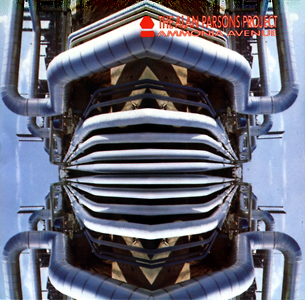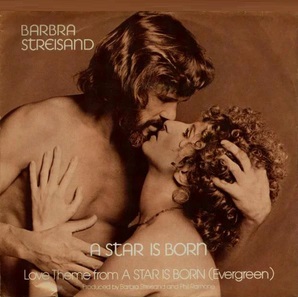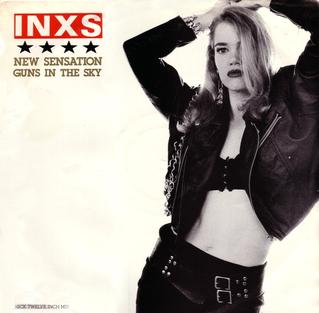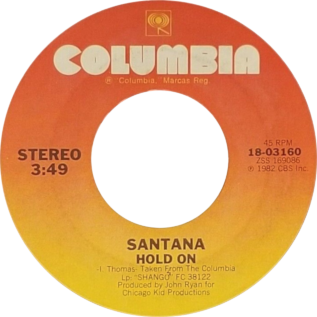
The Alan Parsons Project were a British rock band active between 1975 and 1990, whose core membership consisted of producer, audio engineer, musician and composer Alan Parsons and singer, songwriter and pianist Eric Woolfson. They were accompanied by varying session musicians and some relatively consistent session players such as guitarist Ian Bairnson, arranger Andrew Powell, bassist and vocalist David Paton, drummer Stuart Elliott, and vocalists Lenny Zakatek and Chris Rainbow. Parsons and Woolfson shared writing credits on almost all of the Project's songs, with Parsons producing or co-producing all of the band's recordings.

Ammonia Avenue is the seventh studio album by the British progressive rock band The Alan Parsons Project, released in February 1984 by Arista Records. The Phil Spector-influenced "Don't Answer Me" was the album's lead single, and reached the Top 15 on the US Billboard Hot 100 and Mainstream Rock Tracks charts, as well as the fourth position on the Adult Contemporary chart. The single also reached the Top 20 in several countries and represents the last big hit for the Alan Parsons Project. "Prime Time" was a follow-up release that fared well in the Top 40, reaching No. 34. "You Don't Believe" was the first single in November 1983, reaching #54 on the Billboard Hot 100 and "Since the Last Goodbye" was a minor hit.

I Robot is the second studio album by British rock band the Alan Parsons Project, released on 8 July 1977 by Arista Records. The album draws conceptually on author Isaac Asimov's science fiction Robot stories, exploring philosophical themes regarding artificial intelligence. It was re-released on vinyl and cassette tape in 1984 and on CD in 2017.

Eye in the Sky is the sixth studio album by British rock band the Alan Parsons Project, released in May 1982 by Arista Records. At the 25th Annual Grammy Awards in 1983, Eye in the Sky was nominated for the Grammy Award for Best Engineered Album. In 2019, the album won the Grammy Award for Best Immersive Audio Album at the 61st Annual Grammy Awards.

Pyramid is the third album by progressive rock band The Alan Parsons Project, released in May 1978. It is a concept album centred on the pyramids of Giza. At the time the album was conceived, interest in pyramid power and Tutankhamun was widespread in the US and the UK. Pyramid was nominated for the 1978 Grammy Award for Best Engineered Album, Non-Classical.

Eve is the fourth studio album by British rock band the Alan Parsons Project, released in September 1979 by Arista Records. The album's focus is on the strength and characteristics of women, and the problems they face in the world of men. It had originally been intended to focus on "great women in history", but evolved into a wider concept. The album name was the same as Eric Woolfson's mother-in-law.

"9 to 5" (or "Morning Train") is a song by Sheena Easton from 1981 album Take My Time. It was written by British songwriter Florrie Palmer and recorded and released as single in 1980, becoming Easton's biggest hit. It peaked at number three in the United Kingdom in August 1980 and was certified gold. In February 1981, it was released in the United States and Canada under the title "Morning Train (Nine to Five)" to avoid confusion with Dolly Parton's recent hit "9 to 5". It reached number one in both countries, becoming Easton's only chart-topper in those nations.

"Arthur's Theme (Best That You Can Do)" is a song performed and co-written by American singer-songwriter Christopher Cross as the main theme for the 1981 film Arthur, starring Dudley Moore and Liza Minnelli. It was recognized as the year's Best Original Song at both the 54th Academy Awards and 39th Golden Globe Awards.

"Desire" is a song by Irish rock band U2 and the third track on their 1988 album, Rattle and Hum. It was released as the album's lead single on 19 September 1988, and became the band's first number-one single in the United Kingdom and Australia. It reached number three on the Billboard Hot 100 in the United States, and topped both the Modern Rock Tracks and Mainstream Rock Tracks charts, making it the first song to reach number one on both charts simultaneously. It reached number two on the Dutch Top 40. At the 31st Annual Grammy Awards, "Desire" won the 1988 Grammy Award for Best Rock Performance by a Duo or Group with Vocal.

"Evergreen" is the theme song from the 1976 film A Star Is Born. It was composed and performed by American singer, songwriter, actress and director Barbra Streisand with lyrics by Paul Williams, and arranged by Ian Freebairn-Smith. The song was released on the soundtrack album to A Star Is Born.

"Why Can't We Be Friends?" is a song by American funk band War, from their 1975 studio album of the same name. It has a simple structure, with the phrase "Why can't we be friends?" being sung four times after each two-line verse amounting to forty-four times in under four minutes. The song reached No. 6 on the Billboard Hot 100 in the summer of 1975, and uniquely features each band member singing their own verse. It was played in outer space when NASA beamed it to the linking of Soviet cosmonauts and U.S. astronauts for the Apollo–Soyuz Test Project. Billboard ranked it as the No. 23 song of that year.

"Year of the Cat" is a song by Scottish singer-songwriter Al Stewart, released as a single in July 1976 in the UK. The song is the title track of his 1976 album Year of the Cat, and was recorded at Abbey Road Studios, London, in January 1976 by engineer Alan Parsons. The song peaked at number 8 on the Billboard Hot 100 for the consecutive weeks of March 5 and 12, 1977. Although Stewart's highest placed single on that chart was 1978's "Time Passages", "Year of the Cat" has remained Stewart's signature recording, receiving regular airplay on both classic rock and folk rock stations.

"The Wanderer" is a song by American singer Donna Summer, released as the lead single from her 1980 eighth album of the same name, which was the first for her new label Geffen Records after recording her previous albums with Casablanca Records. Despite the label change, Summer continued to work with Giorgio Moroder and Pete Bellotte, who had produced the majority of her hits in the late 1970s. However, it marks a change in style for The Queen of Disco, incorporating new wave styled synth riffs and a shuffling beat.

"Reunited" is a hit song for R&B vocal duo Peaches & Herb. As the second single release from their album, 2 Hot (1978), the song was a huge crossover smash, topping both the pop and soul charts. It spent four weeks at number one on both the R&B singles chart and the Billboard Hot 100 singles chart in 1979 and sold over two million copies. Billboard ranked it as the No. 5 song for 1979. In Canada, "Reunited" likewise reached number one and was the No. 9 song for the year.

"Voyeur" is a song by American singer-songwriter Kim Carnes from her seventh studio album of the same name (1982). Written by Carnes, her husband Dave Ellingson, and Duane Hitchings, the song is an uptempo synth-pop track. It is the first track from the album, and its lead single.

"New Sensation" is a song by Australian rock group INXS. It was the third single released from their sixth studio album, Kick (1987). The music was composed by Andrew Farriss and the lyrics were written by Michael Hutchence. The song features a signature Kirk Pengilly sax solo and lyrics about a partying lifestyle.

"Time" is a song released in 1981 as a single by the Alan Parsons Project. It was from their 1980 album The Turn of a Friendly Card. In the U.S., the song peaked at No. 15 on the Billboard Hot 100. On the U.S. Adult Contemporary chart, "Time" peaked at #10. In addition, "Time" spent two weeks at #14 on Cash Box, making it the group's second most successful single. Cash Box ranked it as the 94th biggest hit of 1981. Outside the US, the song peaked at #30 in Canada.

America is an American rock group who have released 23 studio albums, 11 live albums and 22 compilation albums. They have also issued 47 singles, including two Billboard Hot 100 and three Adult Contemporary number ones.

"Hold On" is a song written and first recorded by the Canadian singer and songwriter Ian Thomas, on his 1981 album The Runner. His version reached No. 28 on the Canadian pop singles chart.

"Sirius" is an instrumental by British rock band the Alan Parsons Project, recorded for their sixth studio album, Eye in the Sky (1982). Nearly two minutes long, it segues into "Eye in the Sky" on the original recording. From the 1990s onward, "Sirius" has become a staple of many college and professional sporting events throughout North America, most prominently Chicago Bulls and Nebraska Cornhuskers games.




















